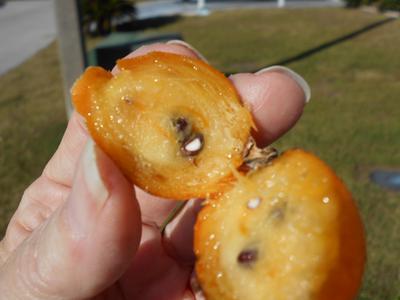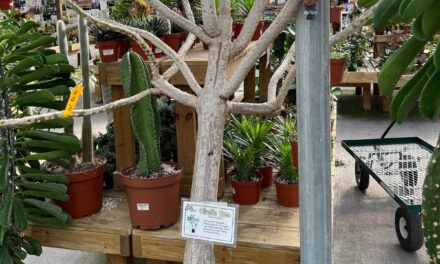
by iva elliott
(bartow, fla usa)




its long slender “leaves” with thorns..solid green color..tall spike in center with orange seed pods..have a sort of sweet taste..didn’t eat one! just a tiny lick…no idea what the blooms looked like…
Comments for long thin leaves with thorns along them…stalk has round orange seed pods..look like mango flesh inside..and some round black seeds
|
||
|
||
|
||
|
||
|
||
|


